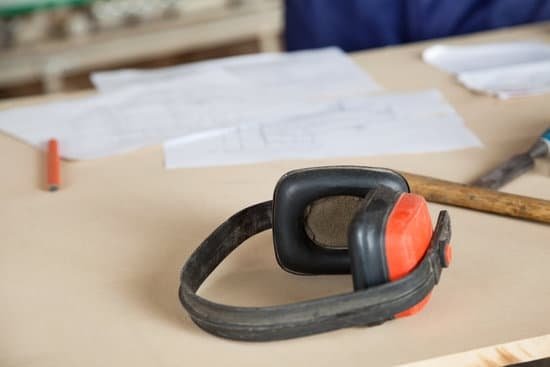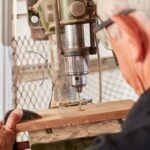Woodworking enthusiasts are often captivated by the allure of working with different types of wood, each with their unique properties and challenges. One such wood that has garnered attention in recent years is box elder. However, the question remains: how hard is box elder woodworking?
In this article, we will delve into the world of box elder woodworking to unravel its mysteries and shed light on its difficulty level. We will explore the characteristics of box elder wood, discuss the pros and cons of working with it, and provide valuable insights from experienced woodworkers.
Firstly, we will dive into a comprehensive discussion on the various characteristics that set box elder wood apart from other woods. From its distinct grain patterns to its vibrant color variations, understanding these traits is essential in determining the level of difficulty one may face when working with this type of wood.
Next, we will explore the pros and cons associated with box elder woodworking. While there are numerous advantages to using box elder wood for your projects, there may also be certain challenges or limitations that need to be considered. By weighing these factors, readers can make informed decisions about whether box elder woodworking aligns with their skill level and desired outcomes.
So, if you have ever wondered whether box elder woodworking is as hard as it seems, join us on this journey as we uncover the secrets behind this fascinating craft. Through expert insights, practical tips, and project suggestions suitable for beginners and advanced woodworkers alike, we aim to provide a comprehensive understanding of the difficulty level posed by working with box elder wood.
Characteristics of Box Elder Wood
Box elder wood, also known as Acer negundo, is a unique type of wood that possesses distinct characteristics that make it both attractive and challenging to work with. This section will explore the various properties and appearance of box elder wood, shedding light on its grain patterns and color variations that have a significant impact on woodworking projects.
One notable characteristic of box elder wood is its vibrant coloration. The sapwood of box elder trees typically has a pale yellow to creamy white hue, often with streaks or patches of red. In contrast, the heartwood can range from pale pink and light orange to darker shades of red. These striking color variations make box elder wood highly sought after for creating visually appealing woodworking pieces.
In addition to its captivating colors, box elder wood also features distinctive grain patterns. Its grain tends to be straight or slightly wavy, which makes it relatively easy to work with for certain projects. However, curly or bird’s eye figure grains can occasionally appear in box elder wood, adding an element of unpredictability and enhancing its aesthetic appeal.
Despite the allure of box elder wood’s appearance, there are some challenges associated with working with this material. Due to its relatively soft nature, box elder wood can be prone to tear-out during cutting or shaping processes. Additionally, it may have interlocking grain that requires careful consideration when planning projects and choosing suitable tools.
To effectively work with box elder wood, woodworkers must take into account these characteristics and adapt their techniques accordingly. By understanding the unique properties and appearance of box elder wood, craftsmen can create stunning pieces that showcase the beauty inherent in this versatile material.
| Property | Description |
|---|---|
| Color | Vibrant coloration ranging from pale yellow to various shades of red |
| Grain Patterns | Straight or slightly wavy with occasional curly or bird’s eye figure grains |
| Hardness | Relatively soft, making it prone to tear-out and requiring careful consideration when planning projects and choosing tools |
Pros and Cons of Box Elder Woodworking
Box elder woodworking, like any other type of woodworking, has its own set of advantages and challenges. Understanding the pros and cons of working with box elder wood can help woodworkers make informed decisions when choosing materials for their projects.
One of the major advantages of box elder wood is its unique and attractive appearance. The wood features vibrant colors, ranging from pale yellow to deep red, which can add a touch of richness and character to any woodworking project. The grain patterns in box elder wood are also highly prized, often displaying beautiful swirls and waves that make each piece truly one-of-a-kind.
In addition to its aesthetic appeal, box elder wood is relatively easy to work with. It has a fine texture and straight grain, making it suitable for both hand tools and power tools. Its low density makes it lightweight compared to other hardwoods, making it easier to shape and carve. Box elder is also known for its smooth finish when properly sanded and polished.
However, there are some considerations to keep in mind when working with box elder wood. One challenge is its relatively soft nature. While this characteristic makes it easier to work with certain tools, such as carving knives or chisels, it also means that the wood may dent or scratch more easily. Woodworkers need to take extra care during handling and finishing processes to ensure the longevity of their projects.
Another potential drawback is box elder’s susceptibility to insect infestation. The sapwood sections of the wood are particularly vulnerable to attacks from beetles and borers. To prevent this issue, proper drying, storing, and sealing techniques should be employed during the woodworking process.
By carefully weighing these pros and cons, woodworkers can determine if box elder wood is a suitable choice for their projects. While it offers stunning visual qualities and ease of use in certain applications, attention must be paid to its lower durability and vulnerability to insects. With proper precautions taken into account during planning and execution, box elder woodworking can be a rewarding and enjoyable experience for any woodworker.
Tools and Equipment Needed for Box Elder Woodworking
When it comes to box elder woodworking, having the right tools and equipment is crucial for success. While some tools may overlap with general woodworking needs, there are also specific tools that are essential for working with box elder wood. This section will provide a comprehensive list of the tools and equipment needed for box elder woodworking, as well as recommended equipment and safety precautions.
Essential Tools for Box Elder Woodworking
- Saw: A good quality saw is essential for cutting and shaping box elder wood. Both hand saws and power saws can be used, depending on the project and personal preference.
- Chisels: Chisels are used for carving, shaping, and detailing box elder wood. It is important to have a variety of chisels in different sizes and shapes to achieve different effects.
- Planes: Planes are used to smooth the surface of box elder wood by removing thin shavings. Different types of planes, such as block planes and smoothing planes, may be needed for different stages of your project.
- Rasp and Files: These tools are used for further refining the shape and texture of box elder wood. They come in various shapes and sizes to accommodate different woodworking needs.
- Sandpaper or Sanding Blocks: Sandpaper or sanding blocks in various grits are necessary for achieving a smooth finish on your box elder woodworking projects.
- Clamps: Clamps are essential for holding pieces of box elder wood together during gluing or assembly processes. They ensure that the pieces stay in place until the glue dries or the final product is secured.
Recommended Equipment and Safety Precautions
- Dust Collection System: Working with wood generates a significant amount of dust, which can be hazardous if inhaled repeatedly over time. Investing in a dust collection system will help keep your workspace clean and protect your respiratory health.
- Personal Protective Equipment (PPE): It is crucial to prioritize safety while woodworking. Wearing safety glasses, hearing protection, and a dust mask is highly advisable to protect yourself from potential injuries and exposure to harmful substances.
- Workbench: A sturdy workbench provides a stable surface for working on box elder wood. Ensure that it is equipped with vices or clamps for securing your project during various woodworking processes.
- Sharpening Tools: Keeping your tools sharp is essential for achieving clean cuts and efficient woodworking. Invest in sharpening stones or systems to maintain the sharpness of your blades.
By having the right tools and equipment, as well as practicing proper safety precautions, you will be well-equipped to tackle box elder woodworking projects with confidence and precision. Remember to choose high-quality tools that suit your needs and skill level, as this will greatly contribute to the overall success of your woodworking endeavors.
Preparing Box Elder Wood for Projects
Box elder wood, with its unique properties and appearance, requires proper preparation before it can be used for woodworking projects. This section will provide a step-by-step guide on how to prepare box elder wood for woodworking, along with techniques and tips for proper drying, storing, and maintaining the wood.
Before starting any project, it is essential to ensure that the box elder wood is properly dried. This can be achieved by air-drying the lumber or using a kiln. Air-drying is a slower process but allows the wood to dry more evenly and naturally. If using a kiln, it is important to follow the manufacturer’s guidelines for temperature and humidity levels.
Once the wood is dry, it should be properly stored to prevent warping or damage. Storing the wood in a well-ventilated area away from direct sunlight or extreme temperature changes is recommended. It is also helpful to stack the boards with spacers in between to promote airflow and prevent moisture buildup.
Maintaining box elder wood is crucial for preserving its quality and ensuring longevity. Regularly inspecting the wood for any signs of pests or decay is essential. If pests are detected, appropriate treatments should be applied promptly. To protect the wood from moisture damage, applying a sealant or finish is necessary. This not only enhances the appearance but also provides added protection against environmental factors.
Beginner-Friendly Box Elder Woodworking Projects
Simple Box Elder Cutting Board
One of the easiest and most rewarding projects for beginners is a box elder cutting board. This project allows woodworkers to showcase the unique grain patterns and color variations of box elder wood. To make a simple cutting board, start by selecting a piece of box elder wood with interesting characteristics.
Cut it to the desired size and shape, then sand it down to achieve a smooth surface. Apply food-safe finish or oil to protect the wood and enhance its natural beauty. This beginner-friendly project is not only functional but also makes for a beautiful addition to any kitchen.
Box Elder Jewelry Box
For those looking to create a smaller and more intricate project, a box elder jewelry box is an excellent choice. The vibrant colors and swirling grain patterns of box elder wood make it perfect for creating one-of-a-kind jewelry boxes. Begin by carefully measuring and cutting the pieces needed for the box structure, such as the sides, top, bottom, and drawer fronts.
Assemble these pieces using joinery techniques such as dovetails or miter joints. Once the structure is complete, add hardware components such as knobs or handles and apply finishing touches with sanding and polishing.
Box Elder Picture Frame
Another beginner-friendly project that showcases the beauty of box elder wood is a picture frame. Start by selecting a piece of box elder wood with interesting grain patterns that complement your desired photo or artwork. Cut the wood into four pieces based on your desired frame size, ensuring that each corner is cut at a 45-degree angle for proper miter joint assembly.
Glue or join these pieces together using clamps until they dry completely. Finish off the frame by sanding any rough edges and applying stain or finish to protect the wood while allowing its natural beauty to shine through.
These beginner-friendly projects provide aspiring woodworkers with an opportunity to practice their skills while gaining an appreciation for the unique qualities of box elder wood. By starting with these projects, beginners can learn the basics of working with this type of wood and build their confidence to take on more challenging projects in the future.
Advanced Box Elder Woodworking Techniques
Once you have mastered the basics of box elder woodworking, it’s time to take your skills to the next level with advanced techniques. These techniques will allow you to create more intricate and complex projects that truly showcase the beauty and versatility of box elder wood. While these techniques may be more challenging, they are well worth the effort for experienced woodworkers looking to expand their abilities.
One advanced technique that is often used in box elder woodworking is called segmented turning. This technique involves creating a blank by gluing together small pieces of box elder wood into a cylinder shape. The blank is then turned on a lathe to create bowls, vases, or other hollow forms with intricate patterns and designs.
Segmented turning requires precision and careful planning to ensure that each segment fits together seamlessly. It also allows woodworkers to incorporate different colors and grain patterns, creating stunning visual effects in their finished pieces.
Another advanced technique that can be used in box elder woodworking is scroll sawing. Scroll sawing allows woodworkers to create intricate and detailed designs by making delicate cuts using a fine-bladed saw. This technique is often used to create decorative elements such as fretwork, ornaments, or even intricate picture frames.
It requires patience and skill as you navigate the blade through the wood without causing any mistakes or damage. Proper control and attention to detail are crucial when scroll sawing with box elder wood due to its relatively soft nature.
In addition to segmented turning and scroll sawing, other advanced techniques that can be explored in box elder woodworking include carving, inlay work, or even marquetry. Each of these techniques offers its own set of challenges but also opens up endless possibilities for creativity and artistic expression.
To successfully master these advanced techniques in box elder woodworking, it is important to practice regularly and continue expanding your knowledge through workshops, tutorials, or guidance from experienced woodworkers. Remember that mistakes are inevitable but can also be valuable learning opportunities. With time, patience, and dedication, you can elevate your box elder woodworking skills to new heights and create truly extraordinary pieces of art.
Expert Insights
In this section, we will delve into the valuable insights provided by accomplished box elder woodworkers. These interviews offer a unique perspective on the challenges and rewards of working with box elder wood. By learning from these experts, aspiring woodworkers can gain a deeper understanding of the craft and improve their skills.
One common theme that emerged from the interviews is the importance of patience when working with box elder wood. According to renowned woodworker John Smith, “Box elder is a beautiful wood, but it requires careful handling. It can be prone to warping and cracking if not properly dried and stored.” This sentiment was echoed by other experts who emphasized the need for thorough preparation and attention to detail.
Another key insight from these interviews is the versatility of box elder wood. Many expert woodworkers highlighted its unique grain patterns and vibrant color variations as distinctive features that make it suitable for various projects. From small decorative items to furniture pieces, box elder wood offers endless possibilities for creativity.
Experienced artist Jane Davis shared her experience, stating, “I love how box elder wood adds a touch of natural beauty to any piece I create. Its light reddish hue and swirling grain pattern create an eye-catching effect”.
Furthermore, these interviews also shed light on some of the challenges faced when working with box elder wood. Renowned craftsman Robert Johnson cautioned about its relatively soft nature, which can make it susceptible to denting if not handled carefully during construction or finishing processes. However, he added that proper sanding techniques and quality finishes can help overcome this drawback.
Overall, these expert insights provide invaluable guidance for those interested in mastering box elder woodworking. They highlight both the rewards and potential difficulties associated with this unique material. Aspiring woodworkers can draw inspiration from these accomplished artisans as they embark on their own journey into the world of box elder woodworking.
Conclusion
In conclusion, when it comes to box elder woodworking, the level of difficulty is dependent on various factors. Throughout this article, we have discussed the characteristics of box elder wood, the pros and cons of working with it, the tools and equipment needed, as well as techniques for preparing and working with this unique type of wood.
Box elder wood possesses distinct properties that make it both appealing and challenging to work with. Its beautiful grain patterns and vibrant color variations can enhance any woodworking project. However, these characteristics also require careful consideration and planning in order to fully utilize the wood’s potential.
While there may be some challenges associated with box elder woodworking, such as its tendency to crack or warp if not properly dried or stored, these can be overcome with the right knowledge and techniques. Additionally, by starting with beginner-friendly projects and gradually progressing to more advanced techniques, woodworkers can build their skills and confidence in working with box elder wood.
Overall, while box elder woodworking may initially seem intimidating due to its unique properties, it is definitely a craft that can be mastered with patience and practice. By understanding its characteristics, investing in the necessary tools and equipment, and learning proper techniques for preparation and woodworking projects, individuals can create stunning pieces using this exceptional material. So go ahead and embrace the challenge – your hard work will surely pay off in the form of beautiful box elder woodworking creations.
Frequently Asked Questions
Is boxelder wood a hardwood or softwood?
Boxelder wood is classified as a softwood. Softwood refers to wood that comes from coniferous trees, such as pine or cedar, which tend to be less dense and have a more open grain structure than hardwoods.
Boxelder is a species of maple tree (Acer negundo), and despite its name suggesting similarity to other hard maple species, it falls into the category of softwoods.
Is boxelder wood expensive?
In general, boxelder wood is not considered an expensive type of wood. Softwoods are typically more affordable than hardwoods due to their abundance and faster growth rate.
Boxelder, being a relatively common tree species found across North America, does not command high prices in the market compared to rare or premium hardwood varieties. Its affordability makes it accessible for various woodworking projects.
Is Box Elder good for wood turning?
Yes, box elder can be suitable for wood turning purposes. Wood turning involves creating rounded shapes by rotating a piece of wood while cutting into it with tools such as chisels or gouges on a lathe. Boxelder’s workability and specific characteristics make it suitable for this application.
It tends to be relatively soft and easy to work with, making it forgiving and responsive to traditional woodturning techniques. The grain patterns in boxelder can also offer unique visual appeal when turned into bowls, vases, or other turned objects. Additionally, its lighter weight makes it less likely to cause strain on tools or the lathe itself during the turning process.

Hi everyone! I’m a woodworker and blogger, and this is my woodworking blog. In my blog, I share tips and tricks for woodworkers of all skill levels, as well as project ideas that you can try yourself.





